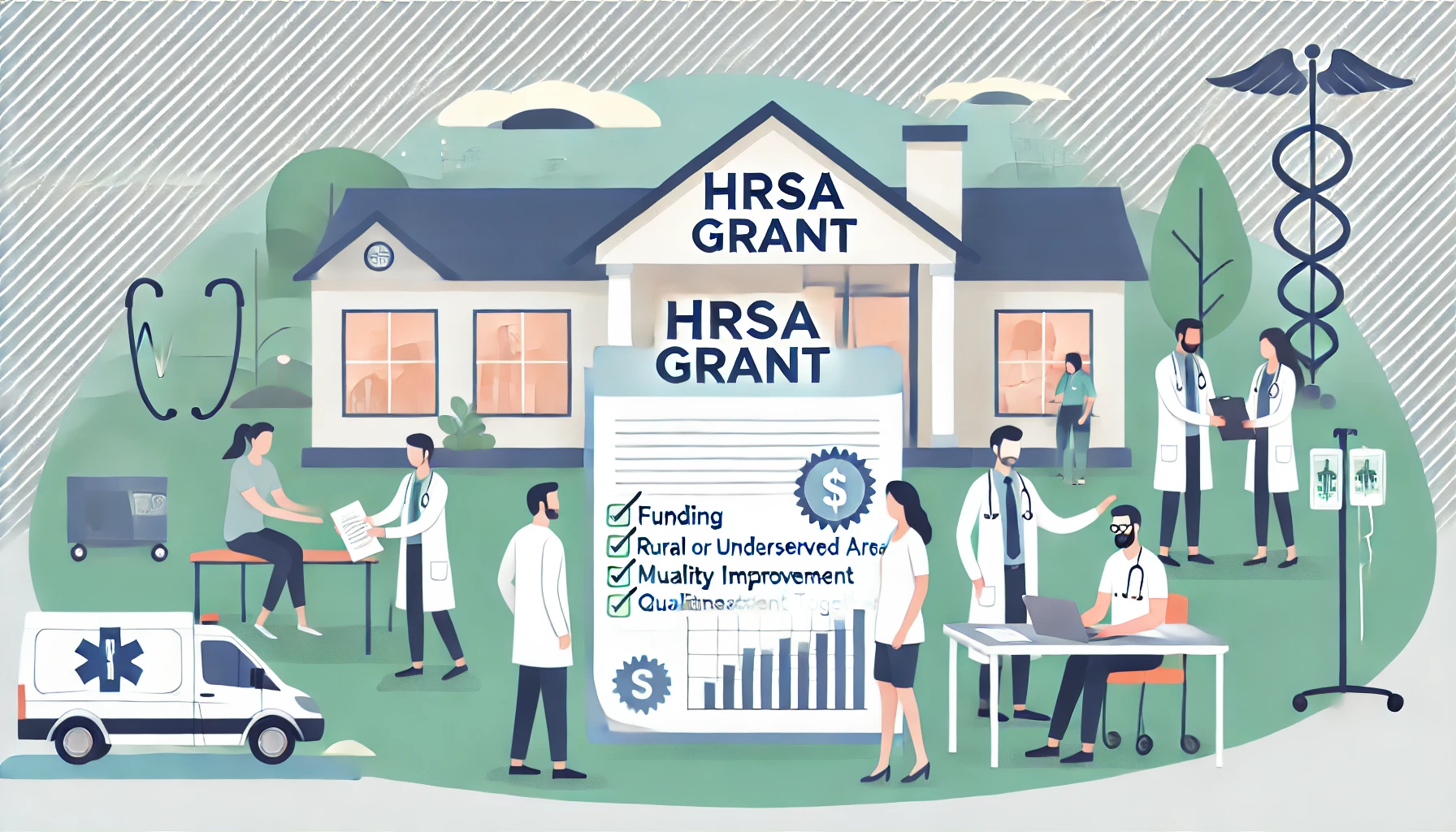
Table of Contents

Unlocking Funding: A Guide to Health Resources and Services Administration (HRSA) Grants
Use HRSA grants to fund external peer review programs that enhance care quality, reduce bias, and support compliance in health centers.
For healthcare organizations serving rural and underserved populations, securing support from the Health Resources and Services Administration (HRSA) can be transformative. From strengthening clinical services to expanding access and improving health outcomes, Health Resources and Services Administration grants offer the funding and framework needed to grow with impact.
Among the many ways to strategically use HRSA funding, one often underutilized yet highly effective investment is the development of an external peer review program. This quality improvement tool can elevate clinical care, support compliance, and supplement internal review processes by providing objectivity and specialized insight.
What Are HRSA Grants?
HRSA is a federal agency dedicated to improving health outcomes and achieving health equity by expanding access to quality services, especially in rural and underserved areas. Through a wide range of competitive grant programs, HRSA funds health centers, educational institutions, and healthcare providers who meet clearly defined community and operational needs.
HRSA grants are highly structured and focus on key domains such as:
- Primary care expansion
- Behavioral health integration
- Maternal and child health
- Rural and telehealth infrastructure
- Workforce development and training
- Quality improvement and risk reduction
Organizations applying for health resources and services administration grants are expected to demonstrate readiness, sustainability, and a plan to measure success through clear, data-driven outcomes.
Strengthening Quality Through Peer Review
An important pillar of many HRSA-funded programs is quality assurance and performance improvement (QAPI). Health centers are encouraged—and often required—to conduct regular clinical peer reviews to evaluate provider performance, maintain standards of care, and identify opportunities for training and support.
Traditionally, this process is handled internally, with providers reviewing the documentation and decision-making of their colleagues. While valuable, internal peer review has its limitations, particularly around consistency, training gaps, and unconscious bias.
Using HRSA Grants to Fund External Peer Review
This is where external peer review comes into play. HRSA grant funding can be strategically used to establish or strengthen an external peer review program that complements internal efforts. By allocating grant dollars to contract with qualified clinicians outside the organization, health centers can enhance the fairness, depth, and credibility of their review processes.
Here’s why this approach makes sense:
1. Reducing Internal Bias
In smaller or tightly knit clinical teams, internal peer review may be influenced—intentionally or unintentionally—by personal relationships, organizational politics, or confirmation bias. An external peer reviewer offers a neutral perspective, ensuring that evaluations are based solely on objective clinical criteria.
2. Closing Knowledge Gaps
Not all peer reviewers have experience across every specialty, procedure, or patient population. External peer reviewers can be selected for their specific expertise, providing targeted insights that may not exist within the internal team. This is particularly important when reviewing high-risk procedures or low-volume services.
3. Enhancing Credibility for Compliance
HRSA’s site visit and compliance standards place emphasis on peer review as a core quality assurance mechanism. Including an external peer review component shows a strong commitment to transparency, continuous learning, and patient safety—qualities that resonate with funders and regulators alike.
4. Supporting Clinical Training and Development
External reviewers don’t just identify issues—they can also offer constructive feedback and education for your clinical team. This adds a professional development benefit to the review process, especially in organizations with newer providers or limited specialty access.
5. Maximizing Grant Impact
Many HRSA grants include line items for quality improvement, patient safety, or clinical oversight. Investing in an external peer review program aligns directly with these objectives and demonstrates responsible use of federal funds to support better outcomes.
How to Build External Peer Review into Your HRSA Grant Strategy
If you’re applying for or managing a HRSA grant, consider the following steps to integrate external peer review:
- Include It in Your Budget: Identify how much of your quality improvement funding can support external review services. Make sure to justify the investment in your budget narrative.
- Tie It to Outcomes: Explain how external peer review will enhance patient safety, improve clinical performance, and support HRSA compliance.
- Start Small: Begin with high-risk or high-impact areas like OB/GYN, behavioral health, or chronic disease management to demonstrate early value.
- Measure and Report: Track the outcomes of peer reviews and use them to inform broader QAPI activities. Share findings in your HRSA performance reports to highlight impact.
Final Thoughts
Securing Health Resources and Services Administration grants is not just about accessing funding—it’s about strategically investing in tools and systems that improve care for the communities that need it most.
An external peer review program is one such tool. When funded through HRSA grants, it can elevate the quality of care, strengthen internal processes, and help your organization meet—and exceed—the expectations of federal funders. In an increasingly complex healthcare landscape, that’s not just good compliance—it’s smart leadership.

Why Every Hospital Needs a Quality and Patient Safety Program
Every hospital needs a quality and patient safety program to reduce harm, improve care, and foster a culture of accountability.
.png)
.png)

HRSA FQHC Requirements: A Comprehensive Guide for Healthcare Providers
When it comes to federally qualified health center requirements, there’s no shortage of regulations, expectations, and—depending on your perspective—opportunities.
.png)
.png)

Understanding Critical Access Hospitals: Definition, Criteria, Requirements, and Medicare Designation
A brief summary of CAH requirements and Medicare Designation.
.png)
.png)



.png)
.png)
.png)






.png)